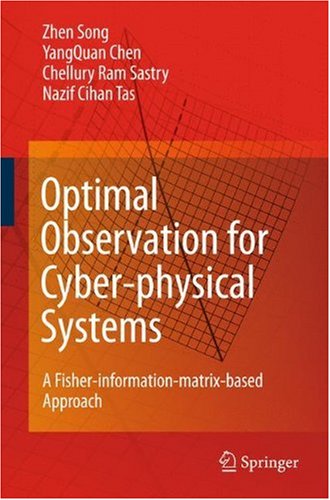

Most ebook files are in PDF format, so you can easily read them using various software such as Foxit Reader or directly on the Google Chrome browser.
Some ebook files are released by publishers in other formats such as .awz, .mobi, .epub, .fb2, etc. You may need to install specific software to read these formats on mobile/PC, such as Calibre.
Please read the tutorial at this link: https://ebookbell.com/faq
We offer FREE conversion to the popular formats you request; however, this may take some time. Therefore, right after payment, please email us, and we will try to provide the service as quickly as possible.
For some exceptional file formats or broken links (if any), please refrain from opening any disputes. Instead, email us first, and we will try to assist within a maximum of 6 hours.
EbookBell Team

5.0
58 reviewsCyber-physical systems (CPS) embody the interaction between a computing system and a physical process, being distinguished from traditional embedded systems by being designed as networks of interacting elements rather than as isolated devices. The wireless sensor networks (WSNs) which are the focus of the research presented here are examples of the application of CPS in monitoring some physical quantities of the environment and relaying the processed information to a central hub.
Optimal Observation for Cyber-physical Systems addresses the challenge, fundamental to the design of WSNs, presented by the obligatory trade-off between precise estimates and system constraints. A unified theoretical framework, based on the well-established theory of optimal experimental design and providing consistent solutions to problems hitherto requiring a variety of approaches, is put forward to solve a large class of optimal observation problems. The Fisher information matrix plays a key role in this framework and makes it feasible to provide analytical solutions to some complex and important questions which could not be answered in the past. A set of MATLAB® files are also provided for the use of the reader (via download from www.springer.com/978-1-84882-655-7), to simulate the experiments that are described in the book.
Optimal Observation for Cyber-physical Systems will be of interest to academic researchers in WSNs and to readers with an applied background in WSN implementation who will find most of the theoretical understanding of the key theory of optimal experimental design they need within this book. The use of multiple real-world examples to illustrate the theoretical parts of the book brings the subject into sharper focus than would an abstract theoretical disquisition. Researchers interested in convex optimization and in environmental monitoring and the estimation of diffusive pollution will also find the text of service.